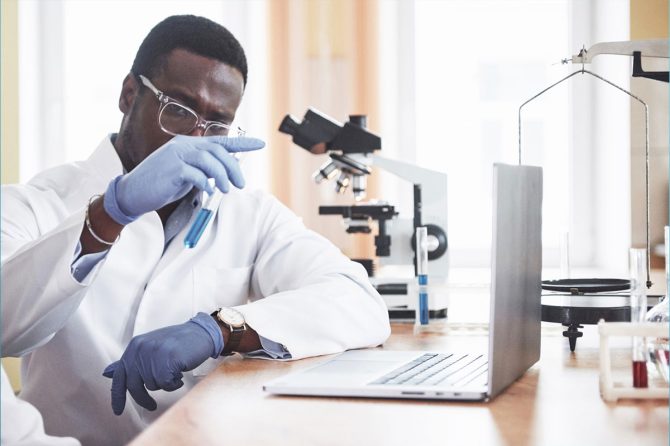
Behind the Scenes: The Role of Lab Services in Diagnosis
Behind the Scenes: The Role of Lab Services in Diagnosis
Introduction
In the world of modern medicine, laboratory services play an indispensable role. From routine blood tests to sophisticated imaging procedures, these services are the backbone of accurate diagnosis and effective treatment plans. But what goes on behind the scenes? How do these tests work, and why are they so crucial?
History of Laboratory Services
The history of laboratory services is rich and fascinating. Medical laboratories have evolved significantly from the rudimentary setups of the 19th century to today’s high-tech environments. Key milestones include the discovery of blood groups, the development of imaging technologies, and the advent of molecular diagnostics. Each advancement has paved the way for more precise and comprehensive medical care.
Types of Laboratory Services
Clinical Laboratories: These labs focus on analyzing bodily fluids like blood and urine to diagnose diseases.
Pathology Laboratories: Specialized in examining tissues and cells, these labs play a critical role in identifying cancer and other diseases at the microscopic level.
Research Laboratories: These labs are dedicated to advancing medical knowledge through experiments and trials, often leading to groundbreaking treatments and technologies.
Key Diagnostic Tests
Blood Tests: These tests provide a wealth of information about your overall health, from blood sugar levels to cholesterol and beyond.
Urine Tests: Often used to detect infections, kidney problems, and more, urine tests are a quick and non-invasive diagnostic tool.
Imaging Tests: Technologies like MRI, CT scans, and ultrasounds allow doctors to see inside the body without surgery, providing critical information for diagnosis and treatment.
Blood Tests and Their Significance
Complete Blood Count (CBC): This test measures various components of your blood, including red and white blood cells, hemoglobin, and platelets. It can detect conditions like anemia, infection, and many other disorders.
Blood Glucose Tests: Essential for diagnosing and managing diabetes, these tests measure the amount of sugar in your blood.
Lipid Profile: This test checks your levels of cholesterol and triglycerides to assess your risk of cardiovascular disease.
Urine Tests and Their Uses
Urinalysis: A comprehensive test that can detect a range of disorders, from urinary tract infections to kidney disease.
Culture and Sensitivity Tests: These tests identify the specific bacteria causing an infection and determine the best antibiotics to treat it.
Pregnancy Tests: These tests detect the hormone hCG in urine to confirm pregnancy.
Imaging Tests Explained
Magnetic Resonance Imaging (MRI): MRI uses powerful magnets and radio waves to create detailed images of organs and tissues, helping diagnose conditions like brain tumors and spinal cord injuries.
Computed Tomography (CT) Scan: CT scans use X-rays to create cross-sectional images of the body, providing detailed information about bones, blood vessels, and soft tissues.
Ultrasound: This imaging technique uses sound waves to produce images of the inside of the body, commonly used in prenatal care, and to examine organs like the heart and kidneys.
The Role of Pathology in Diagnosis
Histopathology: The study of tissue samples to diagnose diseases such as cancer.
Cytopathology: Examining individual cells to detect conditions like cervical cancer through Pap smears.
Molecular Pathology: Using molecular techniques to diagnose genetic disorders and cancers at a molecular level.
Technological Advances in Lab Services
Automation in Labs: Automation has revolutionized lab work, increasing efficiency and reducing human error.
Digital Pathology: The use of digital images in pathology has enhanced accuracy and collaboration among medical professionals.
Artificial Intelligence in Diagnostics: AI is being used to analyze complex data, leading to faster and more accurate diagnoses.
Quality Control in Laboratories
Ensuring the accuracy and reliability of test results is paramount. Laboratories adhere to strict standards and accreditation processes, undergo regular audits, and participate in proficiency testing to maintain high quality.
Challenges in Laboratory Diagnostics
Laboratories face numerous challenges, including managing high sample volumes, maintaining quality standards, and handling rare and complex cases. Continuous improvement and innovation are essential to meet these challenges effectively.
The Role of Lab Technicians and Pathologists
Lab technicians and pathologists are the unsung heroes of diagnostic medicine. Their expertise and meticulous work ensure that test results are accurate and reliable, directly impacting patient care and outcomes.
Case Studies: Lab Services in Action
Early Cancer Detection: Laboratory tests can detect cancer at an early stage, significantly improving treatment outcomes.
Infectious Disease Outbreak Control: Labs play a critical role in identifying and controlling outbreaks, as seen during the COVID-19 pandemic.
Genetic Disorder Diagnosis: Advanced lab tests can diagnose genetic disorders, enabling early intervention and management.
Future of Laboratory Services
The future of laboratory services is bright, with advancements in personalized medicine, real-time diagnostics, and integration with electronic health records promising even better patient care.
Conclusion
Laboratory services are the cornerstone of modern medicine, providing essential information for diagnosing and treating a wide range of conditions. As technology continues to evolve, the role of labs will only become more critical, paving the way for more precise and effective healthcare.
FAQs
1. What are the most common lab tests?
Common lab tests include blood tests (such as CBC and blood glucose tests), urine tests (like urinalysis and pregnancy tests), and imaging tests (such as MRI and CT scans).
2. How do labs ensure the accuracy of test results?
Labs ensure accuracy through strict quality control measures, regular audits, and adherence to accreditation standards. Automation and digital technologies also help reduce human error.
3. What is the role of a pathologist in diagnosis?
Pathologists analyze tissue and cell samples to diagnose diseases, such as cancer. They play a crucial role in interpreting lab results and guiding treatment decisions.
4. How has technology impacted lab services?
Technology has revolutionized lab services through automation, digital pathology, and artificial intelligence, improving efficiency, accuracy, and collaboration among medical professionals.
5. What should patients know about lab test preparations?
Patients should follow specific instructions provided by their healthcare provider, such as fasting before certain tests. Proper preparation ensures accurate results and effective diagnosis.
Leave a reply
Most Commented